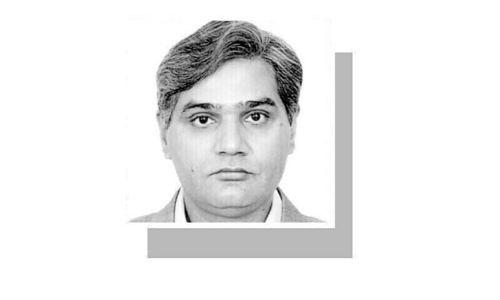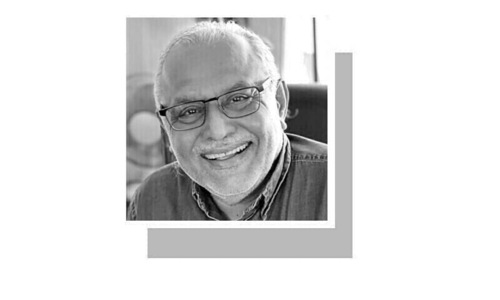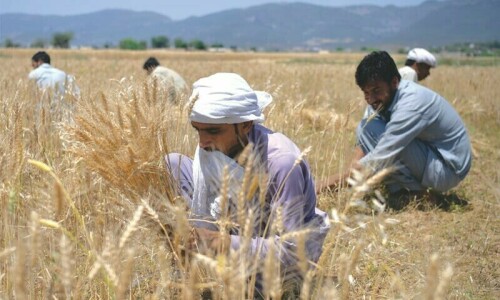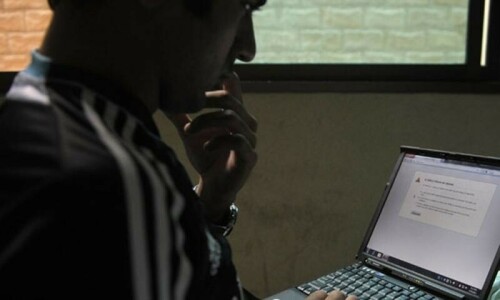THE city of Chandigarh is Islamabad gone right. The similarities between these two cities — of their size, the most modern in the subcontinent — are numberless.
Both were established with the stroke of a pen, like Lutyen’s New Delhi. The three were conceived ab initio as capitals — New Delhi to flaunt British imperialism, Islamabad as a covert acknowledgement of the Pakistan Army’s role in the nation’s governance, and Chandigarh as compensation to East Punjab for losing Lahore. Had Lahore been portable, a third of it would have gone across the border as the rest of Punjab’s assets did in August 1947. Instead, East Punjab had to wait 20 years to be given a capital.
Today, Chandigarh is a sort of urban Draupadi, sharing its favours with three states: Punjab, Haryana and Himachal Pradesh. Islamabad sits poised like an armed shakti astride the tiger of terrorism, detached from the samsara or worldly reality called Pakistan.
I saw Chandigarh for the first time in 1978. My introduction to it was through the eyes of Dr M.S. Randhawa, a retired IAS officer who as chief commissioner Chandigarh had been singularly responsible for establishing the city.
It is said that Mr A.S. (Patras) Bokhari once offered a visiting IAS (then ICS) officer a chair, and when the man boasted of his rank, retorted: “In which case take two chairs.” Free of such arrogance, Dr Randhawa sat on more chairs than he had fingers. As settlement commissioner, he had found homes for millions of Sikh and Hindu refugees who crossed the new border in 1947. He salvaged priceless Pahari miniature paintings, resettling them in Punjab’s nascent museums, and published a number of monographs on different aspects of Kangra paintings — on the Bhagavata Purana, the Gita Govinda, the Ragamala, and the Bihari Sat Sai.
These might have been accomplishments enough for a lesser man. But Dr Randhawa in parallel founded the Punjab Agricultural University at Ludhiana and also steered East Punjab through its Green Revolution until it became the granary of India. The seeds he sowed in the 1960s have 50 years later yielded India a record bumper crop of 263.2 million tonnes of food grain.
When he was asked how he had achieved this modern agricultural miracle, his answer was deceptively simple: by electrifying every village in the Punjab and by connecting every village by road to the nearest town. Electrification, he explained, lengthened the working hours of every farmer into the night and road connections enabled farmers to bring inputs like fertilisers and pesticides and to send their produce out to the nearest market. Punjab’s farmers did the rest.
Residents of Chandigarh nowadays drive blithely past the extensive mango orchards he laid out with such solicitude. They are largely unaware that his planning causes avenues to explode into colour in different months. He welded his training as a botanist, his aesthetic sense and his administrative authority into one, creating Chandigarh a garden with buildings, a city with a green soul.
His pride was its Rose Garden. Jealously protective, he once caught someone plucking a rose from a flowerbed. He stopped his car and raced to reprimand the culprit, only to discover that the thief was Mulk Raj Anand, the famous writer and doyen of art historians.
Dr Randhawa’s generosity towards authors, artists, singers, and sculptors knew no bounds. He adopted a craftsman named Nek Chand who recycled broken glass bangles into figurines. Dr Randhawa gave him space in a public garden to exhibit his works. In time, the prolific Nek Chand, like the proverbial camel, made enough statuary to fill and then overcrowd the garden. Today, Nek Chand is almost as famous as Chandigarh itself, with decidedly less justification.
Visitors with more discerning taste spend their time in Chandigarh’s Government Museum and Art Gallery. It houses the Indian share of the Lahore Museum collection of paintings, sculptures, textiles, coins — all apportioned in the ratio of two to one. As Buddha did not come three-legged, one footprint carved in schist went to Chandigarh, while the other remained in Lahore.
I spoke recently in the museum’s auditorium on the role of three Muslim Fakir brothers at the Sikh Court of Lahore. Dr Randhawa had written extensively on Sikh paintings, and although he died 26 years ago, for me his presence exuded from every leaf, every flower, every stone that is Chandigarh.
His widow Smt Iqbal Kaur lives there, a sprightly 97-year-old with perfect recall. Her presence at the lecture was more than courtesy; it possessed the grace of a benediction. Dr Randhawa had dedicated his book Kangra Paintings on Love to her. How could one not dedicate the lecture to him?
The writer is an author and art historian.










































